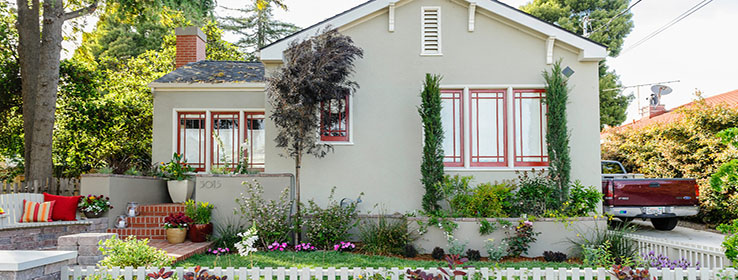
1. Define what bold impression means to your client. There are many ways to help your clients achieve a bold look that’s notable to all who enter their home – whether it’s painting an accent wall or trim a bright color, working in an unexpected pattern, or layering textures or differing materials throughout a space. While it’s true that every project, every client, is different – keeping track of attention-grabbing features used in past projects to reference for future work is a great head start in determining how best to make a space stand out.
2. Confidently find the right colors, even faster. Selecting the right colors is an essential part of good design, but that doesn’t mean you need to start at square one for every project. I have about 20-25 “go-to” colors that I’ve used many times successfully, plus I allow myself the freedom of moving up or down a shade in the color family to keep each project fresh. There are also more color resources available to professionals than ever before, such as ColorSnap® Design Pro Suite, which has mobile apps, fan decks and other tools to guide you and your clients through the color-selection process. Plus, each year Sherwin-Williams shares its color forecast collection that highlights up-and-coming trends to keep you in the know. Have your go-to colors and find new ones your clients will love, too.
3. Don’t be afraid of muted tones. When most people think about making a bold impression, bright vivid hues come to mind. However, bold statements can be made in neutral color palettes as well. Saturated, contrasted hues tend to create energy and movement, while color values that are close together tend to give a calmer appearance. And these concepts can and do work well together – it’s okay to create a calm environment with a pop of color. For example, for a masculine and crisp office space, I’ve used a tonal pair of medium-dark grey-blues, Storm Cloud (SW 6249) with Leisure Blue (SW 6515) for an accent wall, along with a soft light grey trim done with Argos (SW 7065).
4. A room is more than just four walls. Often you can encourage a client to think outside the box, ultimately allowing for another, sometimes-unexpected color application that captures attention. Remind your clients that paint and brushes work on more than just walls. For example, paint ceilings and trim variations of the wall color; paint a large-scale pattern on the floors or paint an old piece of furniture to give it a new purpose. Paint can really be an ally when you have a demanding client with custom desires because it is one of the least expensive modes of experimentation. I often use paint detail to create extra deep-looking trim profiles, such as 11" baseboards or crown molding. Sometimes an additional piece of trim such as a picture rail will complete the look, especially in more classically designed homes.
5. Design can only be as good as the execution. Even the best-laid plans can go astray. You can have everything ready to go, but when you go to put your plan into effect, something can come up that derails your vision. Work with trusted partners and suppliers, such as painting contractors and professional remodelers, who can help you find the right tools for the project at hand. Doing so will help you deliver the best possible outcome for your client.







